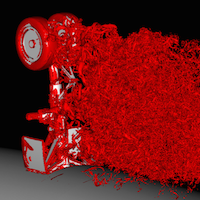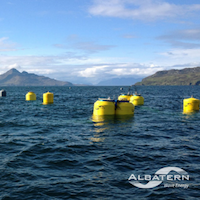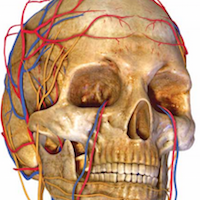Case Studies with Recent Industrial Partners
Some recent examples of industrial collaborations on Archer.

Aircraft Research Association Ltd
The ARCHER National UK Supercomputing Service enabled ARA to perform its largest CFD simulation ever: the simulation would never have taken place if ARA had had to rely on its in-house computing resource. The simulation results for the civil aircraft landing-gear geometry, alongside the wind-tunnel data taken in a companion experimental test,has allowed the numerical approach to be validated and additionally insight into the complex flow physics obtained. Computations such as this will pave the way for increased use of CFD in landing-gear assembly design, leading to improved designs which are more environmentally friendly.

Albatern: Numerical Simulation of Extremely Large Interconnected Wavenet Arrays
Albatern develop novel interconnected offshore marine renewable energy devices. The goal of this SHAPE project was to begin the development of a physics code capable of simulating a large scale Wavenet array (100 or more devices) using HPC technology to extensively parallelise the solution. The simulation capability is intended to build on Albatern's in house modelling expertise, allowing the prototyping of arrays that are currently not possible to simulate due to their scale. Computer visualisation and power prediction of large scale arrays are also vital to the success of Albatern's efforts to continue investment in the technology. To facilitate development, the project was split into an algorithm development task and a HPC implementation task. The completed HPC simulation method will capture fundamental dynamic phenomena associated with arrays of wave energy devices while providing a time and cost effective development technology.

HPC Is Brain Surgery: Cray's XC30 Supercomputer Shows Future Clinical Benefits as Development Tools Partner Helps Application Reach Petascale
The HemeLB research group at University College London (UCL) has an exciting vision, one that will change the way neurosurgeons operate in the future and improve outcomes for patients. The group develops software to model intracranial blood flow - and a collaboration with Cray and Allinea Software, a Cray development tools partner, is helping them address the challenges of application development at high scale. UCL's HemeLB software applies computational fluid dynamics to model blood flow around cerebral vessels and simulate pressure at points of weakness, such as aneurysms. Using data from MRI scans of a patient's blood vessels, the group anticipates that simulations will one day help them decide the best clinical option for individual patients.
Get in touch
Please get in touch to discuss your HPC needs and the possibility of accessing Archer via our helpdesk.






